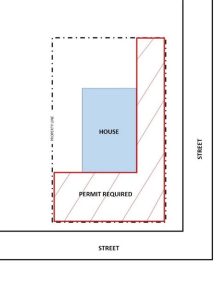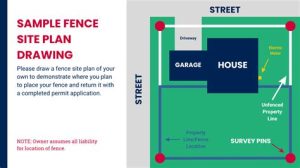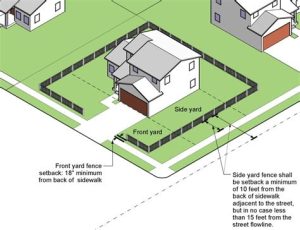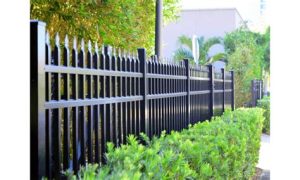Learn about fence permit requirements, local zoning regulations, contractor consultations, permit applications, and approval processes to ensure your fencing project complies with local laws.When it comes to building a fence, many homeowners may not realize that certain types require permits to comply with local regulations. Understanding the nuances of fence permit requirements is essential for ensuring a smooth installation process and avoiding potential legal complications. From defining property lines to maintaining neighborhood aesthetics, the rules governing fencing can vary widely based on location and type. This blog post will guide you through the steps you need to take to navigate the fence permit landscape, including researching local zoning regulations, consulting with licensed contractors, filing a permit application, and ultimately receiving approval from local authorities. By following these steps, you can secure the necessary permissions and set your fencing project up for success.
Understanding fence permit requirements
When planning to install a fence, it’s essential to be aware of fence permit requirements in your area. Different localities have various regulations that dictate the type, height, and location of fences, which can significantly affect whether or not you need a permit.
Generally, certain types of fences are more likely to require a permit, especially those that are taller than a specific height. For instance, most municipalities will require a permit for fences exceeding 6 feet in height. Furthermore, fences that are installed in front yards or near property lines may also have different rules.
It’s important to start by checking with your local building department or zoning office to determine the specific requirements for your area. Understanding these requirements can save you time and money by avoiding potential fines or necessary alterations if your fence does not comply with local laws.
Researching local zoning regulations
When considering the installation of a fence, it is crucial to begin by researching local zoning regulations. These regulations dictate what types of fences are permissible in your area and can vary significantly from one municipality to another. Understanding these rules can save you from potential fines and the headache of having to remove or alter your fence after it has been built.
Typically, zoning regulations will cover aspects such as the height, material, and location of your fence. For example, residential zones may allow for fences up to a certain height in the backyard but impose stricter limitations on front yard fences. Additionally, some areas might restrict the use of specific materials, requiring homeowners to use wood, vinyl, or chain link, instead of prohibiting barbed wire or solid walls.
To begin your research, consider checking with your local zoning office or visiting their official website. Many municipalities offer downloadable documents or online lookup tools that outline their specific regulations regarding fences. Don’t forget to look for any additional homeowner association (HOA) rules if applicable, as these can further influence your options for a new fence.
Consulting with a licensed contractor
When considering the installation of a fence, it is crucial to consult with a licensed contractor. They possess the expertise not just in constructing fences but also in navigating the intricate landscape of local regulations and permits. An experienced contractor can guide you through the process, ensuring your project complies with all necessary requirements.
In many jurisdictions, certain types of fences, especially those that are taller than a specific height or made with particular materials, can require a permit. By working with a licensed contractor, you can avoid potential pitfalls related to zoning regulations and other local laws. These professionals often have a wealth of knowledge regarding your area’s specific rules, saving you time and money in the long run.
Moreover, a licensed contractor can provide valuable insights when choosing the type of fence that best fits your needs and style. They can suggest options that not only enhance the aesthetic appeal of your property but also ensure structural integrity and longevity. Their expert advice can significantly influence the outcome of your project, making them an essential partner in your fence installation journey.
Submitting a permit application
When it comes to erecting a fence, understanding the process of submitting a permit application is crucial. Many local governments require homeowners to obtain a permit before proceeding with their fence installation. This requirement helps ensure that the fence complies with zoning regulations, safety standards, and community aesthetics.
- Site plans: Detailed drawings showing the proposed location and height of the fence.
- Property lines: A survey or description indicating property boundaries to avoid encroachment.
- Specifications: Details about the materials, color, and style of the fence to comply with local aesthetics.
After compiling the required documents, the next step is to fill out the permit application form provided by your local zoning office. Ensure all information is accurate and complete to avoid delays in the approval process.
Receiving approval from local authorities
After submitting your fence permit application, the next crucial step is to wait for the authorities to review and approve your request. This process can vary significantly depending on your location and the specific regulations of your local government. Understanding the factors that influence the approval process can help streamline your fence installation.
Generally, local authorities will evaluate your application based on several criteria, including adherence to zoning regulations, the proposed height and type of fence, and its impact on the surrounding environment. In some instances, you may be required to provide additional documentation, such as site plans or construction details, to facilitate the review.
It’s essential to remain patient during this phase, as the approval process can take anywhere from a few days to several weeks. If your application is denied, you will typically receive a written explanation detailing the reasons for rejection, which may include non-compliance with local codes or conflicts with neighborhood standards. Addressing these concerns and resubmitting your application increases the chances of obtaining the necessary approvals for your fence installation.
Frequently Asked Questions
What types of fences commonly require permits?
Typically, fences that exceed a certain height, are built on property lines, or are made of specific materials may require permits. Local zoning laws often govern these requirements.
How can I find out if my fence needs a permit?
You can check with your local building department or zoning office to learn about specific regulations in your area. They can provide information on height restrictions and permit requirements.
What are the consequences of building a fence without a permit?
Building a fence without a required permit can lead to fines, mandatory removal of the fence, or legal disputes with neighbors or local authorities.
Are there different permit requirements for residential and commercial properties?
Yes, residential and commercial properties often have different permitting processes and requirements. Commercial properties may have stricter regulations due to their intended use.
Can I apply for a fence permit online?
Many local jurisdictions offer online applications for fence permits. Check your local government website or contact the building department for more details.
What documentation do I need to obtain a fence permit?
Usually, you will need to provide a site plan that shows where the fence will be placed, the materials you intend to use, and possibly proof of property ownership.
Do different fence materials affect permit requirements?
Yes, certain materials, like chain link or barbed wire, may have specific restrictions or permit requirements, while wooden or vinyl fences might be subject to different rules.





